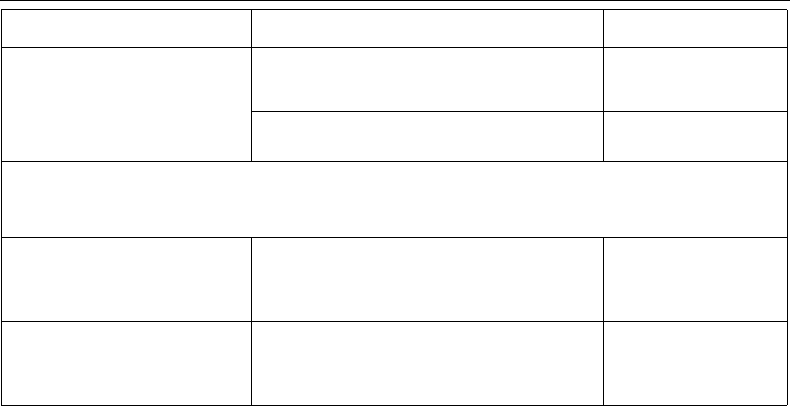Operating Manual Owner manual
Table Of Contents
- Operating overview
- 1 Brief description
- 2 Identifying the device version
- 3 Mounting
- 4 Electrical connection
- 5 Startup of the device
- 5.1 Display and control elements
- 5.2 Setting the display after device is switched on
- 5.3 Selecting and editing parameters (plausibility requirement for input values)
- 5.4 Canceling edit
- 5.5 Acknowledging alarms using the reset key (for temperature limiter STB only)
- 5.6 Acknowledgement of alarms using the binary input (for temperature limiter STB only)
- 5.7 Functional test
- 5.8 Seal device
- 6 Safety Manual
- 6.1 Brief description
- 6.2 Safety temperature monitor (STW)
- 6.3 Safety temperature limiter (STB)
- 6.6 Connection possibilities of the sensors (SIL)
- 6.7 Standards and definitions
- 6.8 Safety-related parameters related to the temperature monitoring unit
- 6.9 Determining the Safety Integrity Level (SIL)
- 6.10 Determining the achieved Performance Level (PL)
- 6.12 Performance Level
- 6.13 Relationship between the Performance Level (PL) and the Safety Integrity Level (SIL)
- 6.14 Other applicable device documentation
- 6.15 Behavior during operation and in the event of a fault
- 6.16 Regular tests
- 6.17 Intrinsic safety according to DIN EN 60079-11
- 6.18 Monitoring of potential ignition sources according to DIN EN 50495 and DIN EN 13463- 6
- 6.19 Certificates
- 7 ATEX
- 7.1 Intended use
- 7.2 Identification markings according to ATEX directive 94/9/EC:
- 7.3 Meaning of the letter X in the type test certificate
- 7.4 Associated intrinsically safe electrical apparatus according to EN 60079-11
- 7.5 Safety device according to EN 50495
- 7.5.1 Temperature monitoring unit based on ignition protection "e" – increased safety according to EN 60079-7
- 7.5.1.1 Function of increased safety
- 7.5.1.2 Application in the 1-sensor variant
- 7.5.1.3 Application in the 2-sensor variant
- 7.5.1.4 Application of temperature transmitters
- 7.5.2 Minimum overpressure monitoring for static pressurized enclosure on the basis of ignition protection "p", pressurized enclosure according to EN 60079-2
- 7.5.2.1 Function of the static pressurized enclosure
- 7.5.2.2 Safety device for static pressurized enclosure
- 7.5.2.3 Application as safety device for static pressurized enclosure
- 7.6 Monitoring of potential ignition sources "b" according to EN 13463-6
- 8 Configuration level
- 9 Technical data
- 9.1 Analog inputs
- 9.2 Analog output
- 9.3 Binary input
- 9.4 Relay outputs
- 9.5 Measuring circuit monitoring
- 9.6 Voltage supply
- 9.7 Test voltages according to EN 60730, Part 1
- 9.8 Electrical safety
- 9.9 Environmental influences
- 9.10 Case
- 9.11 Approvals/approval marks
- 9.12 Important information for the probes in Chapter 9.13 to Chapter 9.15
- 9.13 Probes for the operating medium air
- 9.14 Probes for water and oil
- 9.15 Probes for air, water, and oil
- 10 Setup program
- 11 Alarm messages
- 12 Error messages
- 13 What to do, if ...
- 14 Information for devices with extra code 062 GL
- 15 Behavior of outputs

8 Configuration level
2013-04-01
96
The admissible limits for DIN approved probes:
v Chapter 9.12 "Important information for the probes in Chapter 9.13 to Chapter 9.15" and
v Chapter 9.14 "Probes for water and oil"
8.3.6 Limit value difference,
hysteresis
Limit value difference monitoring:
If the value of the temperature difference of the analog
input 1-2 is exceeded, the alarm relay output is
switched.
0to50 to 100
Hysteresis difference monitoring:
Difference between the switch-off and switch-on
threshold, e.g. for rising and falling differential values.
0to2 to 100
Important information:
If, for example, temperature differences arise as a result of the spatial arrangement of a dual probe, an alarm may be triggered
by the concurrency monitoring even though the temperature being monitored has not yet been exceeded.
In this case, the difference monitoring limit value can be adjusted accordingly.
8.3.7 Setting range min. (for-
merly ALHI)
This is the lower limit of the setting
range for the limit value.
This value may not be lower than the lower end of the
connected probe or unit signal measuring range. It may
also not be set higher than the setting for the alarm
limit value.
-9999 to -200 to limit value
°C
8.3.8 Setting range max. (for-
merly ALLO)
This is the upper limit of the setting
range for the limit value.
This value may not be greater than the higher end of
the connected probe or unit signal measuring range. It
may also not be set lower than the setting for the alarm
limit value.
Limit value
to 850 to 9999 °C
Parameter Comment
Value range
(factory setting in bold)










